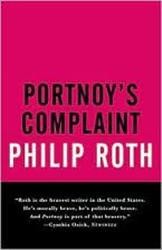Adam Pelzman’s third novel, The Boy and the Lake, finds teenaged Benjamin Baum newly displaced from Weequahic, NJ, Philip Roth’s famed neighborhood, following the Newark riots in 1967. Along with many other families from Weequahic, the Baums move to Red Meadow Lake, a quiet town in northwestern New Jersey; what had been a haven of vacation homes becomes a community of permanent homes, decked out with new cabinetry, two-car garages, and other luxuries their homes in Newark couldn’t supply. In this new world, everyone knows everyone: people play tennis with their rabbi at the local club; they shop for clothes in the secondhand store Ben’s mother opened in their basement. All is great, all is communal, as it should be — until, that is, Ben discovers his neighbor, Helen, dead down by the lake.
Told in a blend of murder-mystery and coming-of-age prose, The Boy and the Lake acts as a tribute to the history of Ashkenazi Jews in northern New Jersey. Pelzman dots this narrative with historical facts and anecdotes, making certain passages read more like a textbook rather than a novel: Ben’s best friend recites stories she’s read about protests against the Vietnam War and about Thurgood Marshall’s appointment to the Supreme Court, and Ben himself tells the reader, in simple, explanatory prose, about immigration patterns of Eastern European Jews to the U.S., how one group thought themselves better than the other, how these cultures varied. Although these passages veer from the novel’s central story — Ben’s solitary investigation of Helen’s death — they also do a great job of reconstructing a time and a once-vibrant neighborhood.
However, these digressions also have the effect of making the novel feel a bit meandering at times. Along with the historical asides, there are multiple narrative threads that are explored at length — Ben’s first drink and his growing dependence on alcohol, his uncle’s stand-up career — which, although interesting in their own right, don’t always have a clear connection with Ben’s quest to find Helen’s killer.
Nevertheless, even if the historical passages and these narrative asides don’t interest a given reader, the suspense of the central narrative likely will. As with all classic whodunits, multiple characters are cast in the narrator’s suspicious gaze, while clues and hints steadily stack up. The story broadens, tension builds. This seemingly idyllic vacation-town-turned-hometown proves itself corrupt. What had been kept beneath the surface, rises.
Benjamin Selesnick is a psychotherapist in New Jersey. His writing has appeared in Barely South Review, Lunch Ticket, Tel Aviv Review of Books, and other publications. He holds an MFA in fiction from Rutgers University-Newark.





